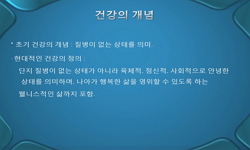So far, two roof tile pieces, with the line saying 'The Seal of Namgung' imprinted upon it, have been found both from the National Gyeongju Museum site and from the ruins at the address of 696-2, Dongcheon-dong, Gyeongju. There have been many suggest...
http://chineseinput.net/에서 pinyin(병음)방식으로 중국어를 변환할 수 있습니다.
변환된 중국어를 복사하여 사용하시면 됩니다.
- 中文 을 입력하시려면 zhongwen을 입력하시고 space를누르시면됩니다.
- 北京 을 입력하시려면 beijing을 입력하시고 space를 누르시면 됩니다.

신라 남궁(南宮)의 성격 = Nature of the 'Namgung' structure in Shilla -Analysis of a roof tile with a line 'Seal of Namgung' imprinted upon it, and the places where they were excavated-
한글로보기https://www.riss.kr/link?id=A82677411
- 저자
- 발행기관
- 학술지명
- 권호사항
-
발행연도
2011
-
작성언어
Korean
- 주제어
-
KDC
900
-
등재정보
KCI등재
-
자료형태
학술저널
- 발행기관 URL
-
수록면
139-174(36쪽)
- 제공처
- 소장기관
-
0
상세조회 -
0
다운로드
부가정보
다국어 초록 (Multilingual Abstract)
However, close analysis of the relics and the vestiges shows us that both sites had something to do with ancestral rituals and ceremonies. In addition, both pieces of roof tiles seem to have been made between the mid-9th century and the 10th, considering the level of technical manufacturing featured by them. It is also determined that the term 'Namgung' was once used as another name of the Ye-bu office[Ministry of Protocols], based upon the contents written upon the stele of Monk Nang'hye of the Seongju-sa temple, which was built at the same period as these tiles.
So, it seems that 'Namgung' was a term that referred to the Shilla dynasty's Ministry of Protocols. And because the term only appeared in a specific time period(from the mid-9th century through the early 10th), it is surmised that the term finally emerged when ancient official titles were being replaced in the middle of the 9th century.
So far, two roof tile pieces, with the line saying 'The Seal of Namgung' imprinted upon it, have been found both from the National Gyeongju Museum site and from the ruins at the address of 696-2, Dongcheon-dong, Gyeongju. There have been many suggestions concerning the true nature of this 'Namgung.' Some people thought of it as a part of a palatial structure, while others considered it to be a governmental office for handcraft manufacturing industry.
However, close analysis of the relics and the vestiges shows us that both sites had something to do with ancestral rituals and ceremonies. In addition, both pieces of roof tiles seem to have been made between the mid-9th century and the 10th, considering the level of technical manufacturing featured by them. It is also determined that the term 'Namgung' was once used as another name of the Ye-bu office[Ministry of Protocols], based upon the contents written upon the stele of Monk Nang'hye of the Seongju-sa temple, which was built at the same period as these tiles.
So, it seems that 'Namgung' was a term that referred to the Shilla dynasty's Ministry of Protocols. And because the term only appeared in a specific time period(from the mid-9th century through the early 10th), it is surmised that the term finally emerged when ancient official titles were being replaced in the middle of the 9th century.
목차 (Table of Contents)
- 머리말
- 1. 국립경주박물관부지 내 유구의 성격
- 2. 동천동 696-2번지 유적 18호 건물지의 성격
- 3. '남궁(南宮)'명 기와와 신라의 '남궁(南宮)'
- 참고문헌
- 머리말
- 1. 국립경주박물관부지 내 유구의 성격
- 2. 동천동 696-2번지 유적 18호 건물지의 성격
- 3. '남궁(南宮)'명 기와와 신라의 '남궁(南宮)'
- 참고문헌
- Abstract
동일학술지(권/호) 다른 논문
-
- 한국역사연구회
- 박미선(Park, Mi-seon)
- 2011
- KCI등재
-
- 한국역사연구회
- 손병규(Son, Byung-giu)
- 2011
- KCI등재
-
이성산성(二聖山城) 출토 문자유물을 통해서 본 신라 지방사회의 문서행정(文書行政)
- 한국역사연구회
- 이경섭(Yi, Gyeong-seob)
- 2011
- KCI등재
-
- 한국역사연구회
- 권기중(Kwon, Ki-jung)
- 2011
- KCI등재




 DBpia
DBpia






